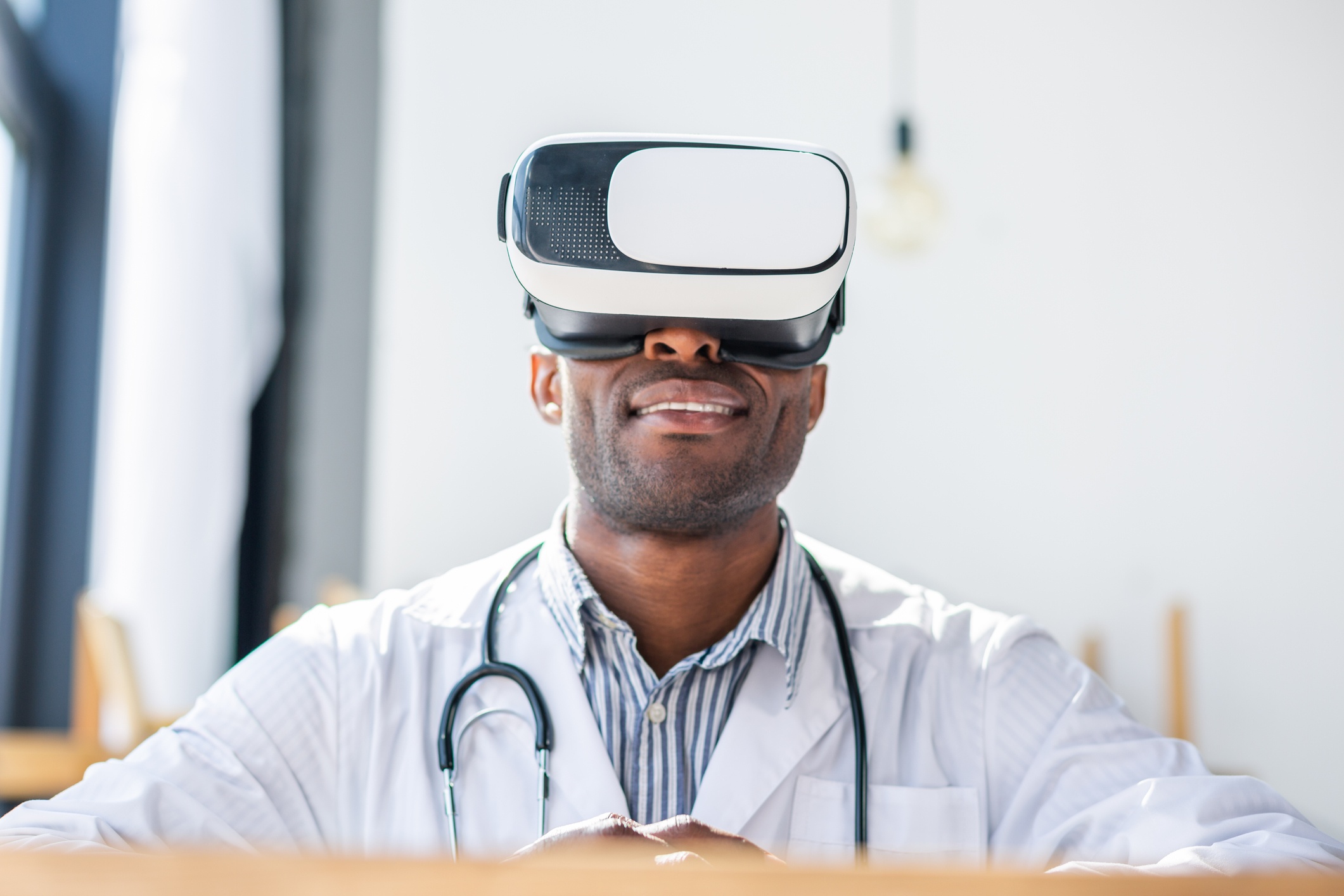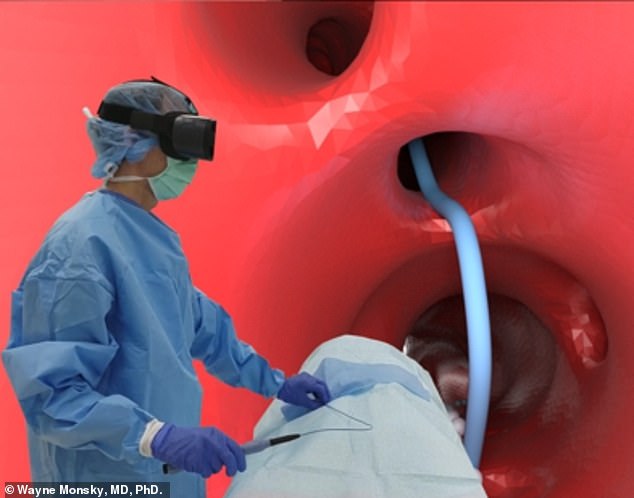
Recent research has utilized VR to let physicians see the inside of patient’s blood vessels in 3D during operation. The study, conducted by the University of Washington Medical Center, demonstrated how a catheter with electromagnetic sensors could be steered by the physician using this VR technology.
Radiologists use imaging techniques to maneuver catheters through blood vessels to precisely treat patients with blood clots, stokes, cancer, and various other conditions. These non-invasive procedures must be done with great care, typically requiring X-ray imaging to properly navigate surgical equipment during the procedure. This imaging method has been effective; however, it also exposes patients to harmful radiation.
Scientists from the University of Washington have designed a new catheter that not only eliminates this radiation exposure but offers a more precise treatment method as well. Using this VR platform, the average time it took physicians to reach targeted blood vessels was much lower than in the traditional X-ray method, known as fluoroscopy.
The researchers generated a 3D printed model and a holographic image of a patient’s abdominal and pelvic blood vessels and had the group of radiologists guide the new catheters throughout the 3D printed model.
READ MORE: World’s First Middle Ear Transplant Conducted Using 3D Printed Parts
The VR software included the 3D holographic display of the patient’s vasculature that the radiologists saw as they navigated through the corresponding 3D-print model. This holographic recreation was made through a University of Washington business incubator program that fostered the development of Pyrus Medical, an endovascular care startup. Both of the models in this study were created from a CT angiographic scan of the sample patient.

“Virtual reality will change how we look at a patient’s anatomy during an IR (interventional radiology) treatment,” said lead author Wayne Monsky, a professor of radiology at the University of Washington, in a statement. “This technology will allow physicians to travel inside a patient’s body instead of relying solely on 2D, black and white images.”
Monsky also noted that 3 billion people currently reside in rural areas that have limited access to the technologies necessary for such procedures.
READ MORE: VRHealth to Launch Virtual Reality System that Alleviates Hot Flashes
“Currently, the life-saving potential of IR is limited to hospitals and areas with the resources to invest in image-guided technology,” he stated.
Monsky feels that providing a simple and portable tool like VR to IR treatments will enable the procedures to be brought to these rural areas with ease. One can transport the necessary equipment for the procedure to these areas in something as small as a suitcase.
After the study, the researchers surveyed the radiologists who used the technology, who reported that VR made the treatment simpler, more precise, and efficient. These physicians also said they felt greater confidence in the procedure while using VR.
https://t.co/bOxBHyW2rR
Virtual Reality Promises Faster Catheter Placement in Blood Vessels … VR could provide faster, more efficient treatment with less radiation exposure … @cyberanimax— BotCyberAniMax (@cyberanimax) March 27, 2019
Sources: Healthcare IT News, Daily Mail, EurekAlert







 © 2025 Mashup Media, LLC, a Formedics Property. All Rights Reserved.
© 2025 Mashup Media, LLC, a Formedics Property. All Rights Reserved.